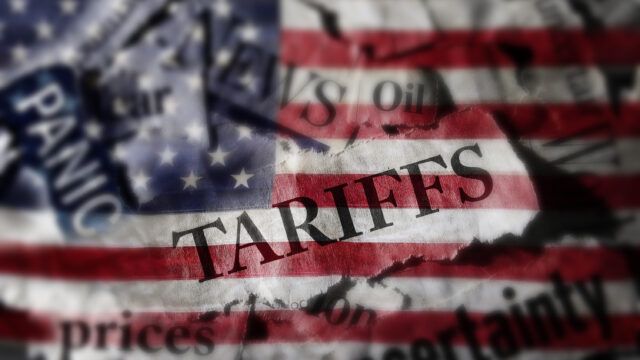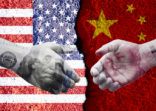President Trump’s “reciprocal” tariff announcements unveiled on Wednesday exceeded most expectations.
Global equity markets reeled in response, with investors moving into safe haven assets such as gold and government bonds.
Strategists at asset managers in Asia are now trying to calculate their effect on economies and market sectors in the region, with several warning that Asia will feel the greatest impact.
“Asia bears the brunt of the US tariffs, with China, South Korea, and Taiwan seeing significant increases compared with lower rates for Latin America,” said Ray Sharma-Ong, head of multi-asset investment solutions – Southeast Asia, at Aberdeen Investments.
Specifically, China will face a 34% tariff on top of the existing 20%, resulting in an effective tariff rate of 54%. Other tariffs in Asia include 26% on India, 32% on Indonesia 24% on Japan, 25% on South Korea, 32% on Taiwan, 36% on Thailand and 46% on Vietnam.
“We expect a market knee-jerk reaction, with the USD weakening, US equities reversing gains, and continued de-risking. The hardest-hit regions, including China, South Korea, and Taiwan, are expected to experience further de-risking as investors move towards safe haven assets such as Treasuries, the yen and gold,” said Sharma-Ong.
Stephen Dover, chief market strategist and head of Franklin Templeton Institute at Franklin Templeton, noted that “it is interesting that China, which has the biggest trade deficit with the United States, does not have the largest reciprocal tariffs.”
Instead, Southeast Asia, which benefited from past tariffs on China and China offshoring, has some of the highest reciprocal tariffs.
Dover believes recession and inflation are “now more likely”, while uncertainty in financial markets has been elevated.
“The economic implications may not be the only impact as there will likely be foreign policy implications such as shunning US products and companies moving forward,” he warned.
Wednesday’s announcement could potentially raise US average tariff rates to levels not seen since the early 20th century, according to Tai Hui, APAC chief market strategist, J.P. Morgan Asset Management.
“If these tariffs persist, they could materially impact inflation, as US manufacturing struggles to ramp up capacity and supply chains pass on costs to consumers,” he said
“For instance, advanced semiconductor manufacturers in Taiwan may not absorb tariff costs without viable substitutes.”
Risk assets under pressure
In the near term, risk assets, including US and Asian equities, may face pressure, noted Hui. “The fear of weaker growth currently outweighs inflation concerns, potentially driving safe haven flows into government bonds.”
However, Hui suggests investors can explore several opportunities. For instance, economies facing smaller tariff increases, such as Australia, the UK, Brazil, and Singapore, “may be viewed more favorably”, while companies in sectors such as financials, healthcare, and consumer services might experience less pressure on profit margins due to higher import costs.
Even in Asia, potential stimulus from Beijing might be supportive, he said, while onshore AI development could also continue to drive corporate earnings.
However, “overall, this policy announcement is likely to dampen risk sentiment in the short term, challenging global growth”.
Chris Kushlis, chief emerging markets macro strategist at T. Rowe Price, agreed that the “tariffs represent a significant increase in tariffs on Asian exports, and arguably more than anticipated by the market”.
He noted that the calculation of these tariffs is opaque, as it incorporates non-tariff barriers and factors such as “FX manipulation”, leaving uncertainty about how these elements influenced the final figures.
The US accounts for approximately 15% of exports from the region, so “tariff increases in the range of 20-35% would pose a meaningful headwind to growth this year, especially for the more open trade-oriented economies”.
Moreover, “many Asia economies have a relatively high proportion of their export value added that ends up in the US, so the broad application of tariffs globally will hinder effects to redirect trade.”
Policymakers’ reactions such as counter tariffs and currency depreciation could trigger an additional tariff response from the US, resulting in further complication for regional policymakers.
Meanwhile, Kushlis expects risk assets to remain under pressure and volatile as companies assess the impact of these tariffs on their business plans and the potential timeframe for negotiations to reduce tariffs.
“Asset prices can stabilise and recover if and when the market gains confidence that these tariffs are a ceiling rather than a moving target,” he concluded.

















